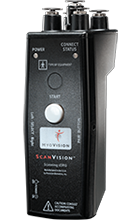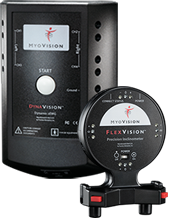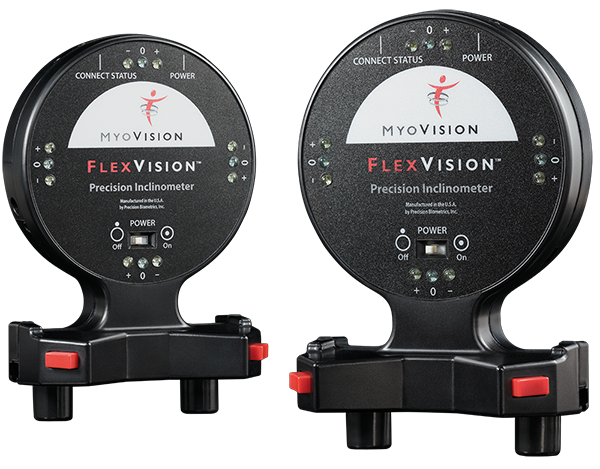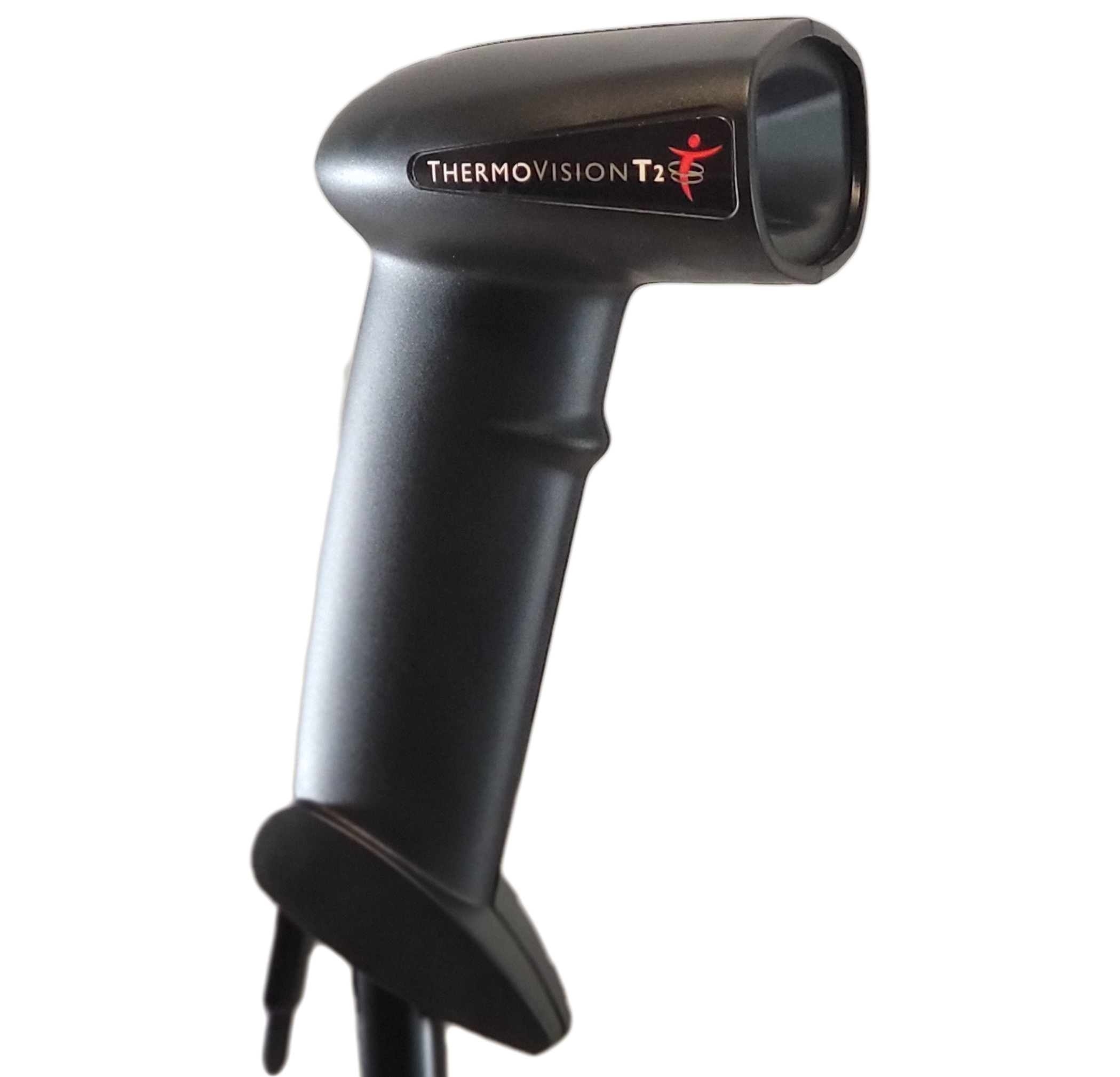Series-5 DynaROM
The First Functional Measure of Spinal Health
An objective means for evaluating presence or absence of soft tissue injury.
Whether you are an athlete experiencing chronic lower back pain or someone who sits at a desk for hours on end, spinal health is essential for overall well-being. DynaROM Motion EMG is the first functional measure of spinal health, providing a more objective means of evaluating the presence or absence of soft tissue injury.
This patented functional test that measures muscle guarding and range of motion at the same time as the patient moves. It effectively and objectively measures the impact of soft tissue injury by documenting pain in motion. By moving the patient, you elicit measurable pain responses and guarding when soft tissue injury is present. Measuring both muscle guarding and ROM at the same time increases the sensitivity and specificity of ROM measures and validate the functional loss associated with ligament injuries more accurately than ever before.
Take the Pain out of PI
Let our experts do the heavy lifting for you!
 Introducing the DynaROM Interpretation Service. Send your exam data directly through the software, straight to our HIPAA compliant email server, where our experts will interpret the data for you. Our experts become your experts! We will provide expert witness testimony in any case where we have provided you with an interpretation report.
Introducing the DynaROM Interpretation Service. Send your exam data directly through the software, straight to our HIPAA compliant email server, where our experts will interpret the data for you. Our experts become your experts! We will provide expert witness testimony in any case where we have provided you with an interpretation report.
In addition, each DynaROM purchase comes with one complimentary attorney presentation to a group of your choice!
Why you need to change your approach to spinal evaluations
Don’t settle for static snapshots when it comes to your patients spinal health. Discover the power of DynaROM Motion EMG.
Traditional methods for evaluating spinal health (MRI, CT, ROM) are performed in a static posture. While these tests do provide valuable information, they only give you a snapshot of the spine in that specific moment in time. The problem with this approach is that it does not capture the dynamic nature of spinal movement and function. That’s where the DynaROM comes in. Unlike these traditional tests, the DynaROM evaluates the spine in real-time during various movements and activities to capture functional data, allowing you to gather more meaningful data and gain a deeper understanding into your patients spinal health to more accurately identify injuries or imbalances, and ultimately treat and heal your patients more effectively and efficiently.
WHAT DO THE RESULTS MEAN?
In the graphs below you will see two measurements: 1. Muscle Guarding (upper half of the graph) and 2. Range of Motion (lower half of the graph). These measurements are taken simultaneously while your patient performs 3 repetitions of a motion over a time span of 30 seconds. There are six of these 30 second tests to measure flexion, extension, left and right lateral flexion and left and right rotation.
Muscle guarding (top graph) is measured in Microvolts (the y-axis), across seconds (the x-axis). The blue line is the left lumbar, the red line is the right.
Range of motion (lower graph) not only shows the degree of motion, but also the quality of motion. Instead of only seeing the end point (the peak in this graph), you can also see “how” the patient moved into that motion. If the patient ratchets in pain, the graph shows this.
DynaROM objectively show the issues they state subjectively (like saying “ow, that hurts”).
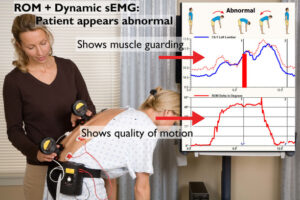
The data gathered correlates highly with components of soft tissue injury by measuring the muscular compensation / response to muscular, ligamentous connective tissue and/or intervertebral disc soft tissue injury and spinal function. By simultaneously measuring and graphing both the active ranges of motion and the muscle guarding response, a more sensitive measure, which correlates more highly with actual patient function, emerges. Unlike MRI, CT or ROM testing, DynaROM is performed in motion which elicits abnormal muscle function if present. In addition, it can expose both symptom magnifiers and malingerers by demonstrating lack of abnormal muscle function or guarding when seen concomitantly with abnormal ranges of motion.
Muscle guarding is the body‘s response to pain in motion and helps establish the validity of a patient’s subjective complaints of pain, or lack thereof, in a manner more accurate than traditional endpoint range of motion.
You can see the patient has normal ROM (lower graph) yet when they are fully relaxed, their muscles are still firing (upper graph) clearly showing injury.
Testimonials

Its integrated use of sEMG and true wireless dual ROM is brilliant. Surface EMG effectively augments ROM by assessing effort.
John J. Gearhardt, MD
Author of the “AMA’s Practical Guide to Range of Motion Assessment”

MyoVision’s DynaROM was crucial in settling our $1 million Soft Tissue Case. Given a choice, I prefer to work with Doctors that utilize DynaROM.
Elizabeth Foley, Esq. PI Attorney

This is a win/win situation for everybody… for the adjusters, the attorneys – you can weed out the patients that really don’t need the care, and you can continue the care for people who do need it. I was totally dumbfounded and noticed that they were allowing me to treat my patients – I wasn’t getting these letters from the insurance companies with IMEs. The only thing that I’ve changed was incorporate your program into this, nothing else.
Mark Apazidis, DC
Centre Chiropractic, West Roxbury, MA

Before purchasing, I did not believe the claims I had heard. Now after being paid in full for the first time in 30 years, I know the claims are true. Just two PI cases paid for my machine, but more importantly, it provides the objective data attorneys are looking for.
Dr. Gerald Lizer

Why Myovision? Because I want the very best for my patients. Currently I am not aware of anything better than the DynaROM in proving soft tissue injury.
Allen Fraley, DC
Fraley Chiropractic, Moses Lake, WA
“ It’s so validating
A real patient speaking about the impact DynaROM had on her workers compensation case.
Insurers have seen the impact on juries, increasing the probability they settle cases in a manner best for the patient.
- Combats negative IME reports
- Proven track record in courts
- Helps establish the quality of the case from the start
- Demonstrates soft tissue injury where all other methods fail
- Focuses the adjuster & juries on quality of data vs. credibility of expert
- Admissibility has been established
- Accurate outcome assessment tool to assist determining MMI
- One exam can cover the cost of a lease payment

A seasoned PI attorney explains why you need DynaROM
Listen to Mike Maxwell, JD, LL.M, speak on the value of DynaROM for the DC, the PI Attorney, and most importantly, the patient. Integrating objective data into your practice will be the key to your success.
Articles
DynaROM has revolutionized the entire process of quantifying soft tissue injury by keeping adjusters, doctors and juries focused on the quality of data.
The DynaROM’s validity has been established all the way up the Supreme Court level. Its precedence is widely known and growing every day. With the DynaROM, you have the data and the documentation necessary to establish need for care.
Learn more about the “Dream Team” and how they changed personal injury for chiropractors in The American Chiropractor.

